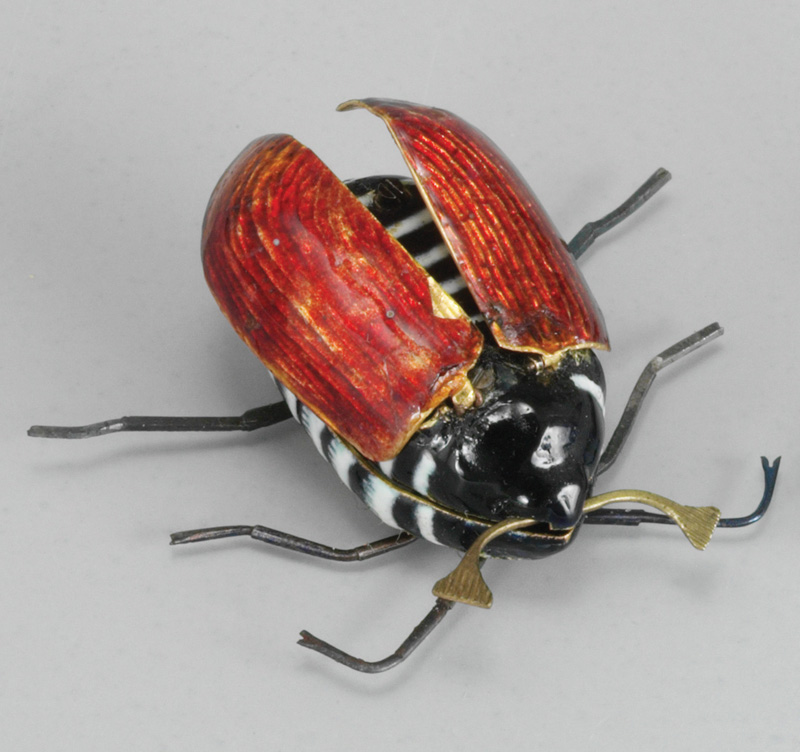
A proper respect for wonder has never been a foregone conclusion. If Aristotle saw wonder as the origin of all knowledge, stoics like Cicero viewed it as an almost puerile intellectual debility. In more recent times, the logical positivists have similarly insisted that, whereof we cannot speak, thereof must we be silent. Fortunately, this dreary doctrine has never enjoyed much currency, and wonder has had its champions. For Goethe, it amounted to the life force itself: “Zum erstaunen bin ich da!,” he wrote, “I am here to marvel.” And many of us would second Diaghilev’s famous injunction to Cocteau, “Étonne-moi!” “Astound me!”
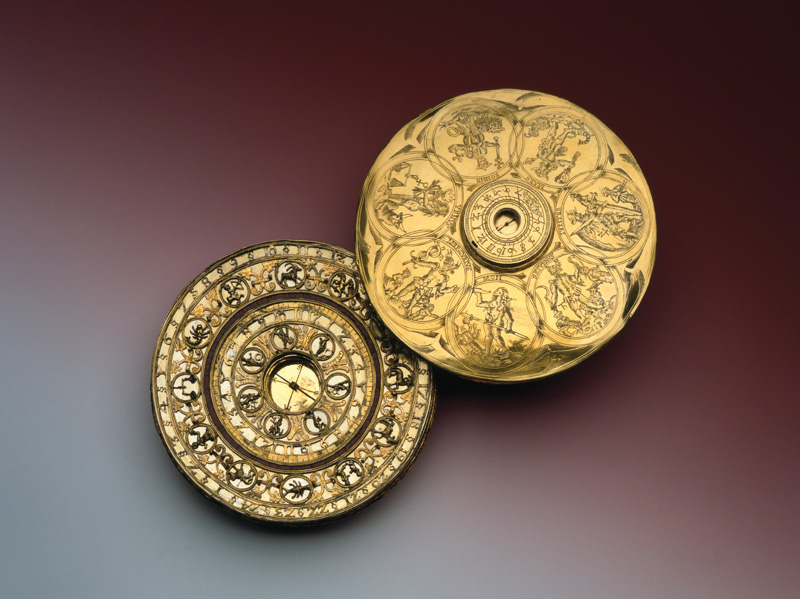
Without this reverence for wonder, we will fail to experience the full effect of a new show at the Metropolitan Museum of Art, Making Marvels: Science and Splendor at the Courts of Europe. In terms of sheer audacity, the extravagant inventions of Hieronymous Bosch can scarcely compete with some of the wonders displayed in this show. A vessel from seventeenth-century Nuremberg assumes the shape of a winged wild boar, its body formed from the shell of a coconut, its golden wings aflutter and its tusks exposed (Fig. 6). A German drinking cup from half a century earlier, its sinuous shape resembling a headless salamander, was formed from a buffalo horn and rises up on gilded bird’s feet. What, one might ask, is going on here? Curated by decorative arts historian Wolfram Koeppe, this exhibition boldly addresses one of the more enigmatic developments in European court culture from the end of the Middle Ages to the eve of the French Revolution: the emergence of the Wunderkammer—the chamber of wonders, also known as the Kunstkammer, or cabinet of curiosities.

Throughout Europe, but especially in the principalities of Germany, the kingdoms of Scandinavia, and the Holy Roman Empire itself, such collections of nonpareils were a reflection of princely power and magnificence. From Margaret of Habsburg to Augustus of Saxony and the Esterházys of Forchtenheim, any self-respecting potentate was expected to amass an impressive display of rare corals and taxidermied two-headed calves, of misshapen pearls and mechanical toys. The one constant in these assemblages was the desire to provoke amazement in all who saw them. This quest was not always compatible with the highest ambitions of visual art: although the Met exhibition concentrates on man-made marvels rather than natural ones, and although many of these bejeweled artifacts have undeniable beauty, their beauty is often subordinated to the larger goal of compelling our admiration for their virtuosity, rarity, and conspicuous expense.
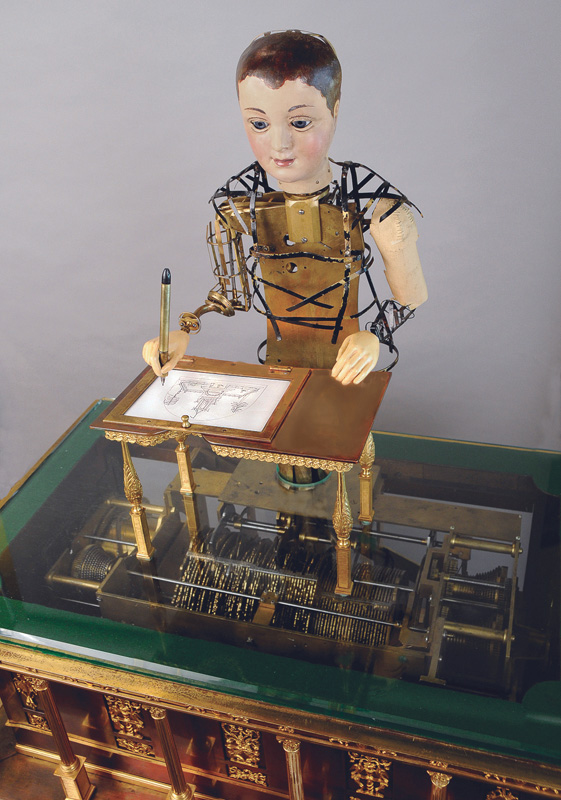
During the period covered by the present show, three revolutions swept through Europe: the philosophical and artistic revolution that was the Renaissance; the so-called scientific revolution of Galileo and Sir Francis Bacon in the first half of the seventeenth century; and the statistical revolution fifty years later, when Europe awoke to its new power to measure the heavens and the earth and every aspect of human life. Accordingly, the age abounded, as does the exhibition, in all manner of newfangled scientific instruments, from a brass gunner’s level (Fig. 3)—with trophies chased into the spandrels of its sextant—to a gilt-bronze microscope sheathed in sharkskin; from a mining compass enlivened with the signs of the zodiac (Figs. 2a, 2b) to a primitive calculator fashioned by the hand of Blaise Pascal himself.
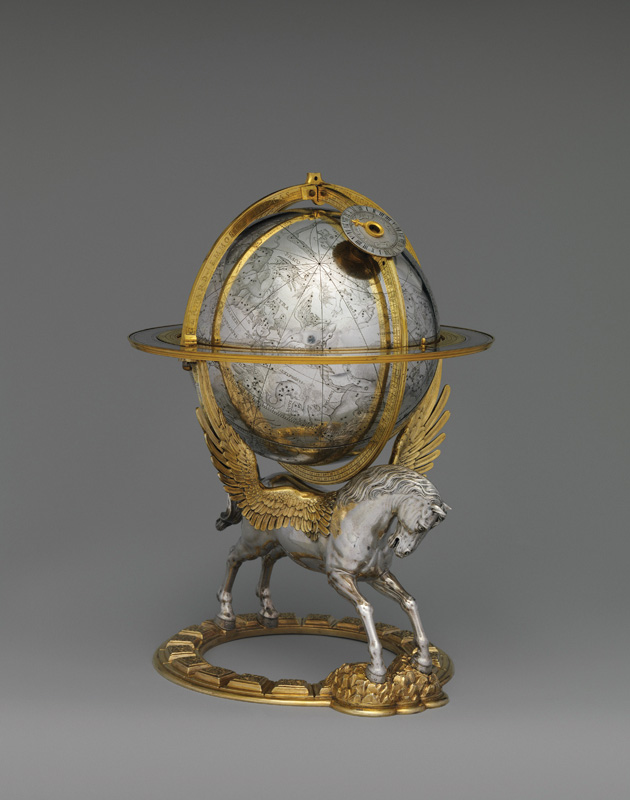
It was a golden age of clocks, those overwrought exercises in applied virtuosity. Gerhard Emmoser’s celestial globe, resting on the back of the winged horse Pegasus, displays the constellations across its parcel-gilt silver and brass surface (Fig. 8). A second clock, designed by Matthias Gaill of Friedberg, is coupled with a magic lantern that can still conjure up the spectral form of the Emperor Leopold I and project it on a neighboring wall.

Rare ivories were another fixture of the Wunderkammer, with the important distinction that they were often conceived and executed by the very prince for whom they were intended. Reworking an elephant’s tusk on a mechanical lathe—another invention of the age—apparently afforded princes some respite from the burdens of their office. Frederick III, king of Denmark and Norway, creator of Copenhagen’s famed Royal Danish Kunstkammer, found satisfaction in this pursuit, as did the Holy Roman Emperor Rudolf II, before he became quite mad. The mechanical lathe seems to have transformed this art from a purely manual endeavor into one whose obedience to the laws of mathematics elevated it to the status of a liberal art. Extraordinary, indeed, is the beauty of three abstract forms thus created by Augustus, elector of Saxony, and inspired by mannerism’s perversion of classical architecture. Here, unannounced, stand some of the first (and best) abstract sculptures in Western art.
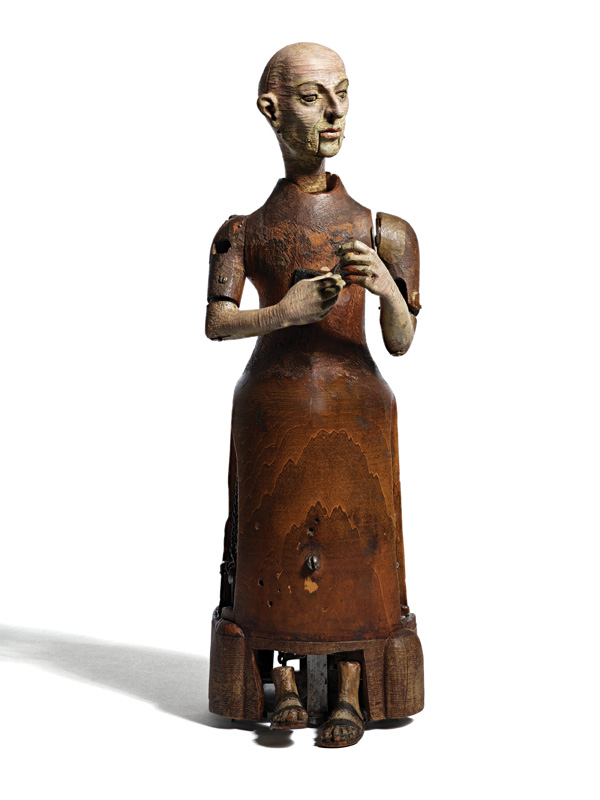
But the element of the Wunderkammer that most amazed the potentates of the ancien régime were its automata, or mechanical toys. In an animated painting (or tableau animé) depicting the park at Saint-Ouen, boats literally move across the surface of the picture plain. Through a mechanism similar to a clock’s, an enameled June bug lurches into life (Fig. 1). A Franciscan monk from Spain, identifiable by his brown robes, moves his sensitively carved head back and forth as he fidgets with his rosary (Fig. 5), while a silver-gilt statue of Artemis, goddess of the hunt, draws an arrow along a bow and discharges it into the air.

To the modern viewer, of course, such mechanisms are apt to seem quaint at best, their movements crude and forced. The latest children’s toy, purchased for less than twenty dollars, will put to shame the halting movements of Artemis and the Spanish monk. Arthur C. Clarke famously said that “any sufficiently advanced technology is indistinguishable from magic.” He was wrong. Magic astounds us. And yet, an essential element of modern life is the atrophying of our capacity for wonder in the face of ever newer and bolder technological marvels. Feats that would have beggared the imagination of Aladdin’s genie—the computational powers of the iPhone, for example, and the luminous screen through which we read it—dazzle us for a day, only to seem commonplace within a matter of weeks. Effects of light and color and sound that earlier generations labored over a lifetime to achieve, today elicit scarcely a passing glance from our jaded generation. Perhaps it takes an exhibition as inspired as Making Marvels to help us claw our way back to that earlier wonder that men and women once felt, and need to feel again.

Making Marvels: Science and Splendor at the Courts of Europe is on view at the Metropolitan Museum of Art to March 1, 2020.

